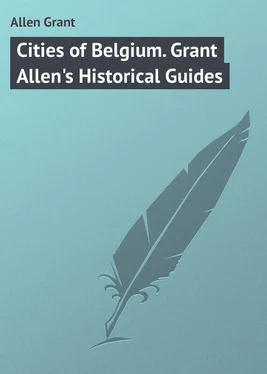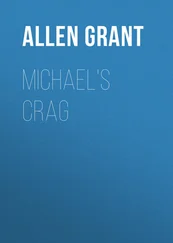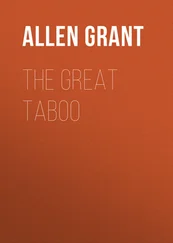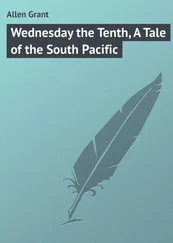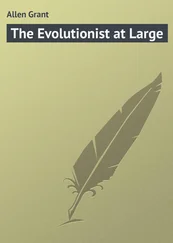Grant Allen - Cities of Belgium. Grant Allen's Historical Guides
Здесь есть возможность читать онлайн «Grant Allen - Cities of Belgium. Grant Allen's Historical Guides» — ознакомительный отрывок электронной книги совершенно бесплатно, а после прочтения отрывка купить полную версию. В некоторых случаях можно слушать аудио, скачать через торрент в формате fb2 и присутствует краткое содержание. ISBN: , Издательство: Иностранный паблик, Жанр: foreign_language, foreign_prose, на английском языке. Описание произведения, (предисловие) а так же отзывы посетителей доступны на портале библиотеки ЛибКат.
- Название:Cities of Belgium. Grant Allen's Historical Guides
- Автор:
- Издательство:Иностранный паблик
- Жанр:
- Год:неизвестен
- ISBN:http://www.gutenberg.org/ebooks/49690
- Рейтинг книги:3 / 5. Голосов: 1
-
Избранное:Добавить в избранное
- Отзывы:
-
Ваша оценка:
- 60
- 1
- 2
- 3
- 4
- 5
Cities of Belgium. Grant Allen's Historical Guides: краткое содержание, описание и аннотация
Предлагаем к чтению аннотацию, описание, краткое содержание или предисловие (зависит от того, что написал сам автор книги «Cities of Belgium. Grant Allen's Historical Guides»). Если вы не нашли необходимую информацию о книге — напишите в комментариях, мы постараемся отыскать её.
Cities of Belgium. Grant Allen's Historical Guides — читать онлайн ознакомительный отрывок
Ниже представлен текст книги, разбитый по страницам. Система сохранения места последней прочитанной страницы, позволяет с удобством читать онлайн бесплатно книгу «Cities of Belgium. Grant Allen's Historical Guides», без необходимости каждый раз заново искать на чём Вы остановились. Поставьте закладку, и сможете в любой момент перейти на страницу, на которой закончили чтение.
Интервал:
Закладка:
Walk up the outer left Aisle. The last bay is formed by the Baptistery, originally the porch, whose beautiful exterior we have already viewed. Its interior architecture is also very charming. It contains the Font, and the usual figure of the patron, St. John the Baptist. This Aisle terminates in an apsidal chapel (of the Holy Cross) containing inferior pictures of the 17th century, representing the history of a relic of the True Cross preserved here.
The inner left Aisleleads to the Ambulatoryor passage at the back of the Choir. The Confessionals to the R. have fairly good rococo carved woodwork, 1689. On the L. is the handsome mediæval woodwork gallery(1474), belonging to the Van der Gruuthuus family, originally approached by a passage from their mansion behind. Beneath it, is a screen of delicate early Gothic architecture, with family escutcheons above the door.
The windows of the Apsehave good modern stained glass.
On the L., at the entrance to the Apse, Pourbus’s Adoration of the Shepherds, a winged picture, closed. The sacristan will open it. On the wings are, left , the donor, Sire Josse de Damhoudere, with his patron, St. Josse, and his four sons; right , his wife, Louise, with her five daughters, and her patron St. Louis of France, wearing his crown and robe of fleurs-de-lis, and holding the main de justice . He is represented older than is usual, or indeed historical, and in features somewhat resembles Henri IV. This is a fine picture for its master. On the outer wings are the cognate subjects, the Circumcision and the Adoration of the Magi, in grisaille.
The chapel in the Apse, formerly the Lady Chapel, now contains the Host. It has a gaudy modern altar for the monstrance.
In the South Ambulatory, over a doorway, Foundation of the Church of Santa Maria Maggiore at Rome, by Claeissens.
A chapelto the L., just beyond, locked, but opened by the sacristan (1 franc; or, for a party, according to notice displayed at entrance), contains the celebrated **tombs of Mary of Burgundy and Charles the Bold, her father. Mary was the wife of Maximilian, and died by a fall from her horse in 1482, when only twenty-five. Her **monumentwas designed and executed by Peter Beckere of Brussels, by order of her son Philippe le Beau, in 1502. The sarcophagus is of black marble: the statue of the Princess, in gilt bronze, lies recumbent upon it. The style is intermediate between that of the later Middle Ages and of the full Renaissance. Beside it is the *tomb of Charles the Bold, of far less artistic value. Charles was buried at Nancy, after the fatal battle, but his body was transported to St. Donatian in this town by his descendant Charles V, and finally laid here beside his daughter by Philip II, who had this tomb constructed for his ancestor in imitation of that of Mary.
(I advise the visitor after seeing these tombs and the great chimney-piece of the Franc de Bruges to read up the history of Charles the Bold and his descendants, down to Charles V.)
The east wall of this chapel, beyond the tomb of Charles the Bold, has a fine picture of Our Lady of Sorrows, enthroned, surrounded by smaller subjects of the Seven Sorrows. Beginning at the left, the Circumcision, the Flight into Egypt, Christ lost by his parents in the Temple, the Way to Calvary, (with St. Veronica holding out her napkin,) the Crucifixion, (with Our Lady, St. John, and Mary Magdalen,) the Descent from the Cross, and the Deposition in the Tomb. A fine work of its sort, attributed to Mostart (or to Maubeuge). On the west wall are two wings from a triptych by Pourbus, with tolerable portraits, (centre-piece destroyed,) and an early Flemish painting of the Deposition from the Cross (interesting for comparison with Roger van der Weyden and Gerard David). In the foreground lies the vessel containing the Holy Blood. On the wings are the Crucifixion and the Resurrection. The whole is very rudely painted. Outside are portraits of the donor and his wife and children, with their patrons St. James (staff and scallop) and St. Margaret (whose dragon just appears in the background).
On an arcade, a little further on, is a very early fresco (1350?) of a saint (St. Louis of France?), and also a dainty small relief (about 1500) of a donor, introduced by his patron, St. Peter, adoring Our Lady.
The end chapelof the right aisle, that of the Holy Sacrament, contains a celebrated and noble white marble **Madonna and Child, by Michael Angelo, enshrined in a black marble niche. The pensive, grave, and graceful face, the exquisite modelling of the dainty naked Child, and the beautiful infantile pose of its left hand, all betray a design of Michael Angelo, though the execution may possibly have been left to pupils. But the modelling is softer and more feminine than is usual with this great sculptor, except in his early period. In this respect, it resembles most the unfinished Madonna in the Bargello at Florence. Condivi mentions that Peter Mouscron of Bruges ordered of Michael Angelo a Madonna and Child in bronze: he was probably mistaken as to the material: and we have here doubtless the work in question. Apart from its great artistic value, this exquisite group is interesting as affording another link between Flanders and Italy.
The same chapel also contains some good 17th century pictures.
Near the confessional, as we return towards the West End of the church, we find a good diptych of Herri met de Bles, of 1520, containing, left panel , an Annunciation, with all the conventional elements; to the left, as usual, is the angel Gabriel; to the right, Our Lady. These relative positions are never altered. The lilies in the pot, the desk and book, the bed with its furniture, the arcade in the background, and the rich brocade, are all constant features in pictures of this subject. Look out for them elsewhere. The right panel has the Adoration of the Magi, with the Old, Middle-aged, and Young Kings, the last-named a Moor. This quaint and interesting work of a Flemish painter, with its archaic background, and its early Italian reminiscences, also betrays the influence of Dürer. Among the other pictures may be mentioned a triptych in an adjacent small chapel: the central panel shows the Transfiguration, with the three apostles below, Moses, Elias, and the Eternal Father above (perhaps by Jan Mostart). On the wings (much later, by P. Pourbus), are the portraits of the donor, his wife, and their patron saints.
The West Wallof the church has several large pictures of the later Renaissance, which can be sufficiently inspected on their merits by those who care for them. The best of them are the Adoration of the Magi by Seghers, and De Crayer’s Adoration of the Infant Jesus. I do not propose to deal at length with later Flemish art till we reach Brussels and Antwerp: at Bruges, it is best to confine oneself to the introductory period of Flemish painting – that of the Burgundian princes. I will therefore only call attention here to the meaningless way in which huge pictures like B. van Orley’s Crucifixion, with subsidiary scenes from the Passion, reproduce the form of earlier winged pictures, which becomes absurd on this gigantic scale.
The Church of St. Jacquesstands in the street of the same name, conveniently near the Hôtel du Commerce. It is a good old mediæval building (12th century, rebuilt 1457-1518), but hopelessly ruined by alterations in the 17th century, and now, as a fabric, externally and internally uninteresting. Its architecture is in the churchwarden style: its decoration in the upholsterer’s. The carved wooden pulpit is a miracle of bad taste (17th century), surpassed only by the parti-coloured marble rood-screen. A few good pictures and decorative objects, however, occur among the mass of paintings ranged round its walls as in a gallery. The best is a panelof the old Flemish School (by Dierick Bouts, or more probably a pupil), in the left aisle , just beyond the second doorway. It tells very naïvely the History of St. Lucy (see Mrs. Jameson). Left , she informs her mother that she is about to distribute her goods to the poor, who are visibly represented in a compact body asking alms behind her. Centre , she is hailed before the consul Paschasius by her betrothed, whom she refuses to marry. She confesses herself a Christian, and is condemned to a life of shame. Right , she is dragged away to a house of ill-fame, the consul Paschasius accompanying; but two very stumpy oxen fail to move her. The Holy Ghost flits above her head. The details are good, but the figures very wooden. Dated, 1480.
Читать дальшеИнтервал:
Закладка:
Похожие книги на «Cities of Belgium. Grant Allen's Historical Guides»
Представляем Вашему вниманию похожие книги на «Cities of Belgium. Grant Allen's Historical Guides» списком для выбора. Мы отобрали схожую по названию и смыслу литературу в надежде предоставить читателям больше вариантов отыскать новые, интересные, ещё непрочитанные произведения.
Обсуждение, отзывы о книге «Cities of Belgium. Grant Allen's Historical Guides» и просто собственные мнения читателей. Оставьте ваши комментарии, напишите, что Вы думаете о произведении, его смысле или главных героях. Укажите что конкретно понравилось, а что нет, и почему Вы так считаете.
